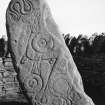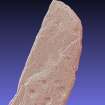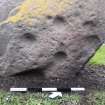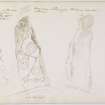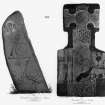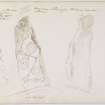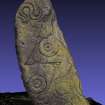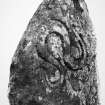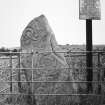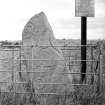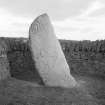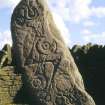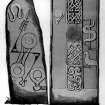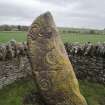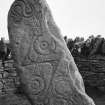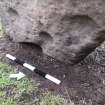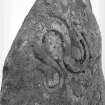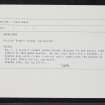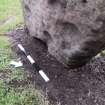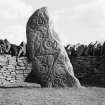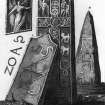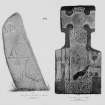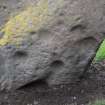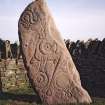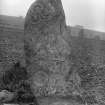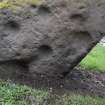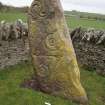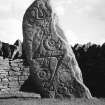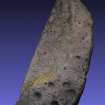Following the launch of trove.scot in February 2025 we are now planning the retiral of some of our webservices. Canmore will be switched off on 24th June 2025. Information about the closure can be found on the HES website: Retiral of HES web services | Historic Environment Scotland
Aberlemno 1
Natural Feature (Period Unassigned), Pictish Symbol Stone (Pictish)
Site Name Aberlemno 1
Classification Natural Feature (Period Unassigned), Pictish Symbol Stone (Pictish)
Alternative Name(s) Aberlemno Roadside; Aberlemno No.1
Canmore ID 34861
Site Number NO55NW 8.01
NGR NO 52277 55918
Datum OSGB36 - NGR
Permalink http://canmore.org.uk/site/34861
- Council Angus
- Parish Aberlemno
- Former Region Tayside
- Former District Angus
- Former County Angus
This Pictish Symbol Stone, known as Aberlemno No.1, stands on the south side of the road from Forfar to Brechin, a short distance to the north of Aberlemno church. Dating to about the 7th century AD, it bears three Pictish symbols, usually described as the serpent, the double disc and Z-rod, and the mirror and comb.
Information from RCAHMS (SC, JBS) 7 September 2007
Aberlemno 1, Angus, Pictish symbol stone
Measurements: H 1.88m above ground, W 0.84m, D 0.23m
Stone type: Old Red Sandstone
Place of discovery: NO 52277 55918
Present location: in situ beside the road at Aberlemno.
Evidence for discovery: first recorded by Skene in 1832.
Present condition: weathered.
Description
This slab is incised on one broad face with a serpent above a double-disc and Z-rod above a mirror and single-sided comb.
Date range: seventh century.
Primary references: Skene 1832, 18; Fraser 2008, no 51.1.
Desk-based information compiled by A Ritchie 2017.
Note (1983)
NO55NW 8.01 5227 5591.
A Class I Pictish symbol stone, which stands adjacent to the public road (B 9134) 345m N of Aberlemno church. On one face there are a serpent, a double disc with Z-rod, and a mirror and comb; and near the bottom of the other there are six cup-marks.
RCAHMS 1983.
(Pennant 1774-6, ii, 167; Stuart 1856, 21, plate lxxi; Jervise 1857a, 192; Allen and Anderson 1903, iii, 205; Coutts 1970, 51, no. 1).
Photographic Record (1 September 1999 - 30 September 1999)
Photos taken during a field trip by the Edinburgh University Archaeology Fieldschool.
Magnetometry (9 October 2017 - 10 October 2017)
NO 52277 55918 An area of c1.32ha was surveyed, 9–10 October 2017, using a Bartington 601 magnetic gradiometer in the field adjacent to a group of three Pictish symbol stones at the edge of Aberlemno Village. No features of possible archaeological significance were identified, with a probable metal pipe immediately to the E of the stones indicating this area may be significantly affected by modern groundworks.
Archive: University of Aberdeen
Funder: University of Aberdeen
James O’Driscoll – University of Aberdeen
(Source: DES, Volume 18)
Note (4 May 2021)
Date Fieldwork Started: 04/05/2021
Compiled by: ELF
Location Notes: The panel is located on the S side of the B9134 road surrounded by semicircular stone dyke and interpretation panel 'Aberlemno 1' or the 'Serpent Stone'. It is the furthest E of group of three Pictish Symbol standing stones. It bears Pictish Symbols described as a serpent, double disc and Z-rod , and a mirror and comb on one face On the rear of the stone there are six large circular depressions which have been described as cup-marks. It is commonly thought that the Serpent Stone is a much earlier megalith that was re-used by the Picts. However, the cup-like depressions are not uniform in depth, diameter, or profile. No peck marks or rings are visible. A groove between two of the lowest depressions is wide and flared. All of these depressions are characteristic of natural weathering.











































